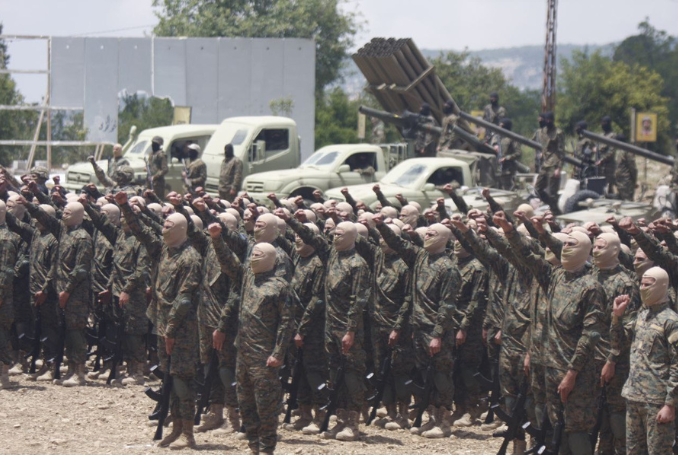
Despite daily threats against Lebanon, a comprehensive Israeli study paints a bleak picture of what would happen should an all-out war take place.
Over 100 Israeli senior military and government officials took part in a study conducted by Reichman University Institute for Counterterrorism regarding what could happen in the case of an all-out war between Israel and the Lebanese Resistance group Hezbollah.
The findings of the study were published in a report issued by the Israeli news website Calcalist and other Israeli media.
This is the summary of the findings of the Israeli study.
- An Israel-Lebanon war in the north would start with a “massive and destructive barrage of Hezbollah rockets”, which are likely to reach all parts of the country.
- The number of Hezbollah rockets to hit Israel is estimated to be anywhere between 2,500 and 3,000 per day.
- The Hezbollah rockets will involve a mix between precision long-range missiles and less accurate rockets.
- Hezbollah is likely to concentrate its attacks on a single area at a time, for example, a major Israeli army base or a specific city in the center of the country.
- The rockets will continue on a daily basis and are likely to last for up to six weeks.
Regional Resistance
The report also suggested that “all Iranian proxies” from across the region would join Hezbollah in the fight. This includes Resistance groups in Syria, Iraq, Yemen, along with the Palestinian groups Hamas and the Islamic Jihad in Gaza.
“Beyond causing immense destruction in Israel, including thousands of casualties on both the frontlines and the home front, causing public panic, a central objective of the multi-front attack will be to collapse the IDF’s air defense systems,” Calcalist said, adding:
“Precision-guided munitions and low-signature weapons, such as loitering munitions, drones, and standoff missiles, will attempt to physically strike and destroy Iron Dome batteries.”
ISRAELI MEDIA: Iron Dome failed to intercept a Hezbollah missile.
FOLLOW OUR LIVE BLOG:https://t.co/jxRbeNviJd pic.twitter.com/wRmnkIlFjx
— The Palestine Chronicle (@PalestineChron) February 14, 2024
The report claimed that the rate of Hezbollah and other Resistance groups’ fire “will challenge Israeli technology like never before” as “the stockpiles of Iron Dome interceptors and David’s Sling missiles will be depleted within a few days of the fighting, leaving Israel exposed to thousands of rockets and missiles without effective active defense.”
“The seaports of Haifa and Ashdod will be paralyzed, impacting international trade. Dozens of Iranian-made suicide drones will fly at very low altitudes towards high-quality targets deep within Israel, directed at weapon factories, IDF emergency warehouses, and hospitals, which will be overwhelmed with casualties beyond what medical teams can handle, far more than even after October 7.”
‘Chaos’
The bleak scenario is likely to worsen leading to total ‘chaos’ when Hezbollah sends hundreds of Radwan commandos to seize towns and villages inside Israel in addition to taking control of Israeli military bases.
Despite this assessment, which essentially suggests a near state of collapse of the Israeli military, along with the civilian infrastructure, Israeli politicians continue to speak about the war on Lebanon with upbeat language.
On January 30, Israeli Defense Minister Yoav Gallant said that in the case of an escalation, “the situation in Haifa will not be good, but in Beirut, the situation will be devastating.”
Gallant reiterated his threats on February 3, warning that “if Hezbollah thinks that when there’s a pause in fighting in the south, we will hold fire against it, it’s sorely mistaken”.
In Numbers – These are Israeli Losses in the Last Four Months of Fighting with Hezbollah
Since the start of the Israeli war on Gaza, on October 7, the Lebanese movement Hezbollah has engaged directly, but relatively in a limited way in the war against the Israeli occupation.
According to Hezbollah sources, the movement has carried out 169 military operations in the first 120 days of war, killing over 2,000 Israeli soldiers.
Israel has occupied parts of Lebanon for decades and has only left the country in 2000, following stiff Lebanese resistance under Hezbollah’s leadership.
It attempted to re-occupy Lebanon in 2006 but failed in what Lebanon considers a major victory against Israel.
Israel, however, continues to occupy parts of Lebanon, namely the Sheeba Farms region.
Hezbollah has vowed to recover every inch of Lebanon that has been occupied by Israel contrary to international law.
(The Palestine Chronicle)









Israel already got beaten by Hezbollah, back in 2006, when it attempted to conquer Lebanon. Eighteen years later, Hezbollah is much bigger and much stronger (with over 100,000 very well-trained fighters; a large network of underground tunnels; as well as an arsenal of 150,000-200,000 rockets and missiles, that can reach any Israeli city, town, or military base). What a blessing it is that Lebanon has Hezbollah to defend it against the genocidal Zionist entity, who dreams of conquering Lebanon and turning it into another occupied Palestine.
Yes, indeed.
Then why arent they attacking israel? Whats the hold up?
Don’t loose hope Allah swt is with beleavers inshallah we will definitely win.our heroes are brave